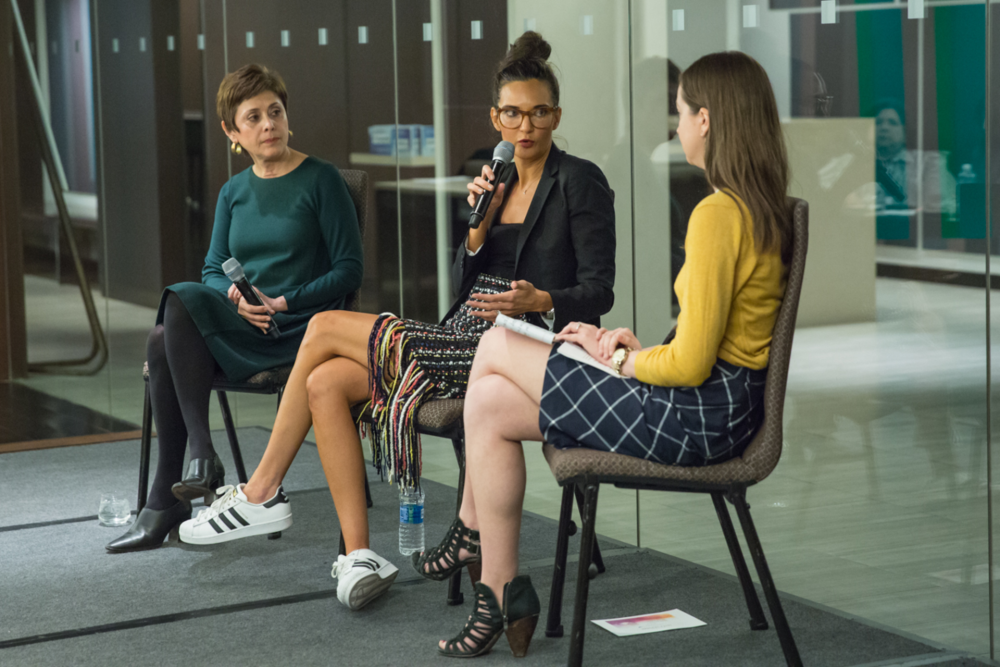While much has changed in the marketing landscape, the need for trust, authenticity, and transparency when curating your brand has not. That’s the message panelists Emma Carrasco, CMO and senior VP of audience development, NPR, and Lauren Crampsie, Worldwide CMO, Ogilvy & Mather, emphasized during their discussion at the Direct Marketing News 2016 Marketing Hall of Femme Leadership Summit & Awards in New York.
The session, “What it Takes to Become CMO Today,” delved into the skills and strengths necessary to succeed in the modern marketing environment. “Trust is earned day by day and action by action,” Marketing Hall of Femme honoree Carrasco stressed. “Be authentic to yourself, really understanding and valuing your own set of skills and experiences.”
Understanding digital analytics are a given, but additional key attributes that remain constant, according to Carrasco, include innate curiosity, the ability “to really, really listen,” and the understanding that while you may all the necessary skills, you don’t necessarily have all the answers. To that, Crampsie, a fellow Marketing Hall of Femme inductee, added the ability to “focus,” emphasizing that it’s easy to be distracted by the constant parade of shiny new objects. “There’s always a lot of noise,” she said, “so if you don’t have that laser focus and discipline on the one or two things you want to drive, you’ll end up doing too much.”
With the need to prove ROI a constant, Crampsie noted that she serves two masters: the agency and clients. “Even though I am a CMO of an agency, I still have to make sure the agency is delivering ROI for the client.” To that end, Crampsie, who started out in business development at Ogilvy, still counsels clients on how to get the most out the agency. “It’s all about driving business for the agency, and for our clients,” she said.
While some marketers may dread the ROI mandate, for Carrasco it provided a welcome metric. “I love ROI, because it has allowed me to progress throughout my career; [allowing me] to define a set of measurable results and deliver on them as a baseline and exceed them.”
Addressing the hot-button issue of how to help ensure women are promoted to the C-suite, Crampsie stressed that it’s up to the women within an organization to do the heavy lifting. “Four of us went to the [2016] Maker’s Conference, and when we got back, we came up with a plan,” she recalled. “We took a hard look at the data of our company, looking at the percentage of women in the C-suite,” she said. “We took that data to our new CEO, telling him we want all of these numbers to be 30% by next year—at major conferences, senior leadership meetings, we want 30% women—even if there aren’t 30% women in the C-suite. We got him to agree.
“CEOs react to data,” she added.
The plan includes going public with the numbers in 2017.
NPR, on the other hand, is an organization founded by women. “These women are bad-ass,” Carrasco asserted. “Our organization is 40% women; in the C-suite, the COO, CMO, and CFO are all women. We have a seat at the table.”
The challenge, though, is ensuring the protocol continues. “Our succession plan is the linchpin to ensuring that NPR as an organization looks and sounds like America,” Carrasco added. “That process is our challenge.”








